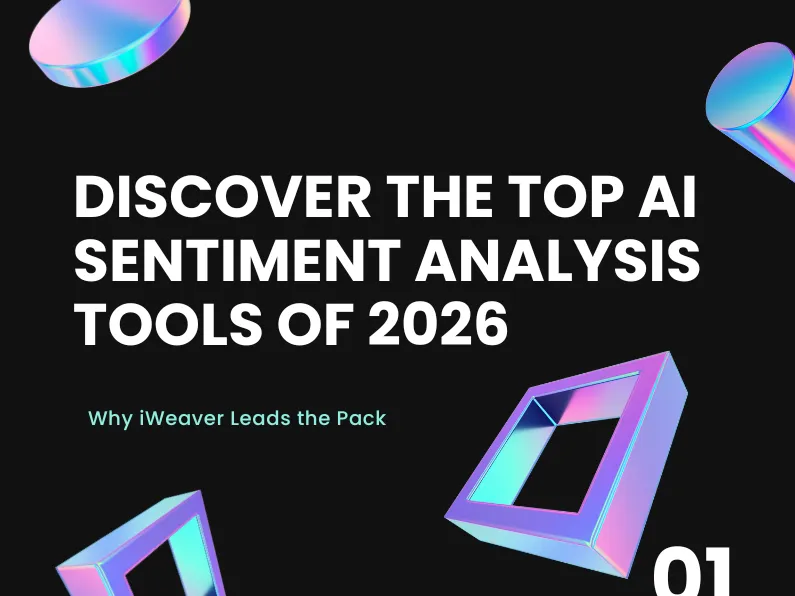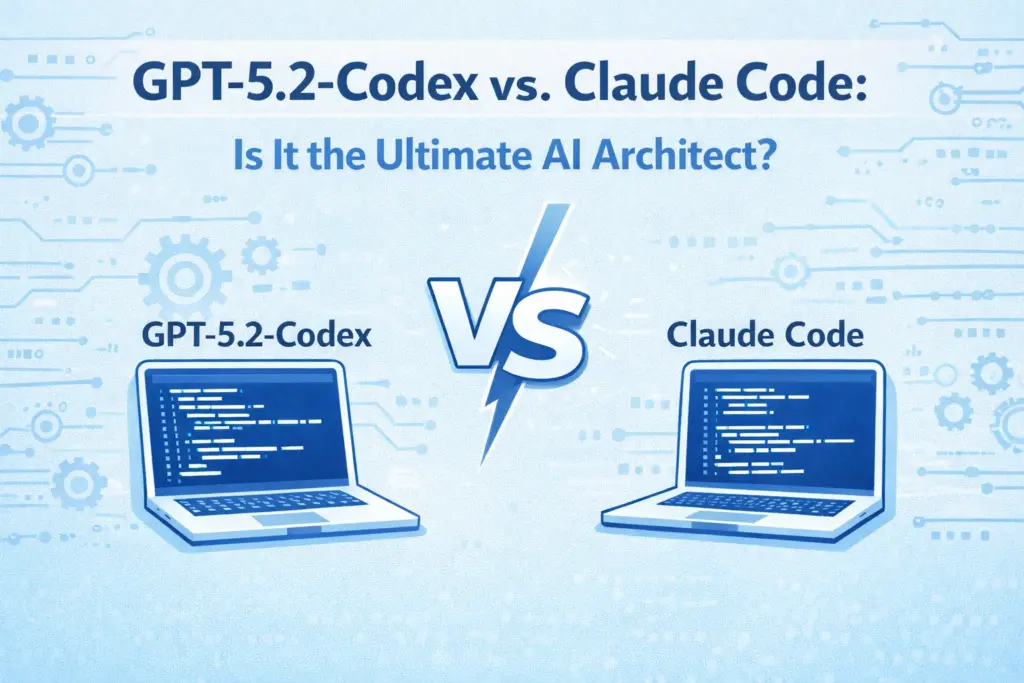What’s the Buzz About?
If you’ve been following tech events like Google Cloud Next in Las Vegas or skimming recent AI news, you might have stumbled across MCP—Model Context Protocol. It’s not just another acronym to ignore; it’s a game-changer that’s got everyone from developers to industry leaders buzzing. As our apps and tools become more complex, the need for them to work together seamlessly has never been greater. MCP, introduced to the open-source community by AI pioneer Anthropic in November 2024, is stepping up to meet that need, especially in the AI space where it’s helping systems connect and share data like never before.
What Is MCP?
At its core,Model Context Protocol (MCP) is a protocol that standardizes how software systems communicate and exchange data in real time. Picture it as a universal connector that lets apps—whether a website, a database, or an AI model—share information effortlessly, without the need for custom-built integrations. Unlike older methods that often required tailored code for every connection, MCP provides a single, consistent framework. For AI, this means models can access scattered data across various sources and even interact with each other, streamlining workflows for developers and enterprises alike.
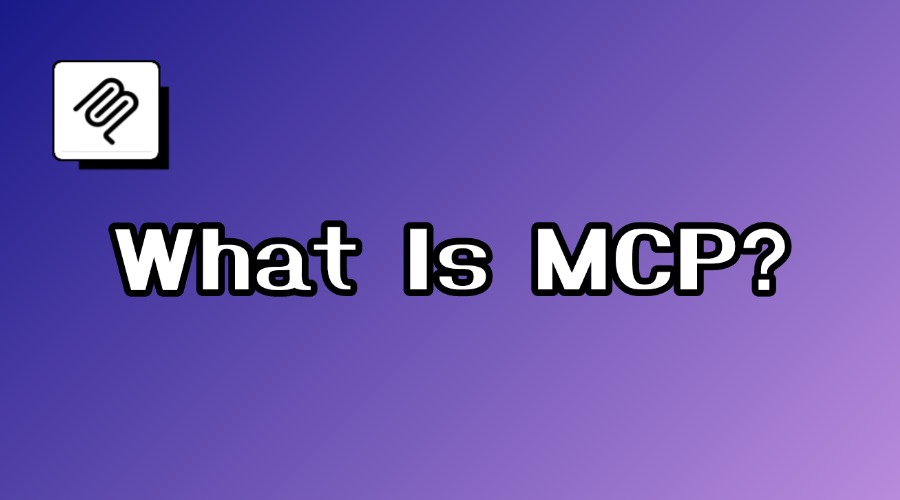
Where MCP Came From
MCP’s story began with the frustration of fragmented tech systems, particularly in AI development. Anthropic, a leader in AI innovation, saw the need for a better way to connect models with diverse data sources and tools. Drawing inspiration from foundational protocols like HTTP and GraphQL, they envisioned MCP as a way to make technology work as a unified whole. When Anthropic open-sourced MCP in November 2024, their goal was clear: create a standard that lets systems share data as easily as devices connect over the internet, paving the way for smarter, more collaborative applications—especially for AI agents that need to access the right data at the right time.
How MCP Works?
MCP runs on a client-server model, using JSON-RPC—a lightweight format—for fast, clear communication. Here’s the gist:
- Client-Server Dance: The client (say, a shopping app) sends a request (like “check inventory”) to the server (an inventory system), which responds instantly.
- Open-Source Heart: MCP’s code is public, hosted on places like GitHub, where developers tweak and improve it.
- Locked Down: Authentication, like OAuth tokens, ensures only trusted apps talk. Encryption keeps data safe.
For instance, MCP could let a fitness app ask a diet tracker for meal data, with both apps staying in sync securely.

Why MCP Matters
MCP tackles the chaos of disconnected systems, especially in AI where models often struggle to access data spread across different repositories. It enables real-time updates—like an AI-powered stock app displaying live prices or a team tool syncing tasks across devices—without constant manual intervention. By offering a universal standard, MCP eliminates the need for custom code for every app pair, saving developers time. For businesses, it means tools that operate more efficiently, and for users, it delivers tech that feels intuitive. As Cloudflare’s VP of Product Rita Kozlov told Fierce, “MCP in 2025 is like HTTP in the early 1990s—it could redefine how we interact with businesses and even spark entirely new kinds of services.”
What’s Driving the Excitement?
MCP’s momentum is growing fast. Major AI players like OpenAI, Anthropic, and Google are starting to adopt it, with discussions heating up at events like Google Cloud Next in Las Vegas. Community demos are also fueling the hype—Hugging Face’s MCP blog showcased an AI chatbot syncing with a translation model in real time. WeChat posts highlight Chinese startups using MCP to connect e-commerce platforms with logistics, reducing delivery delays. Meanwhile, Addy Osmani’s Substack notes Cloudflare’s experiments with MCP for edge computing. These real-world applications show MCP is ready to make a big impact.
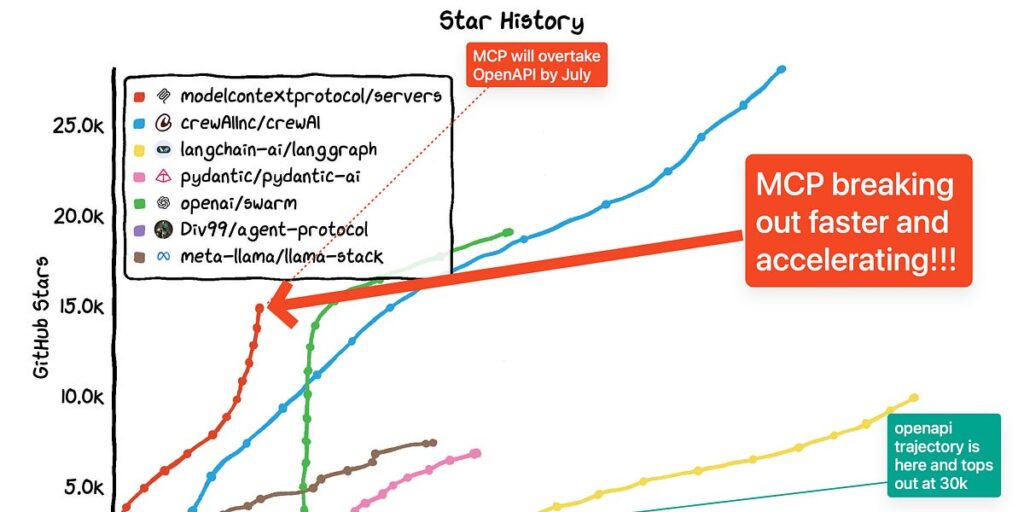
What You Gain from MCP
MCP offers benefits across the board:
- Developers: Skip tedious integrations. Connect systems in hours, not weeks, and scale effortlessly.
- Businesses: Link tools like CRMs and payment systems for smoother operations. A retailer in the Hugging Face blog cut order processing time by 60% using MCP.
- Users: Enjoy apps that update instantly, like a travel planner pulling live flight data without a hitch.
- AI Developers: For AI specifically, MCP allows models to access diverse data sources and communicate with each other, enabling more intelligent and responsive applications.
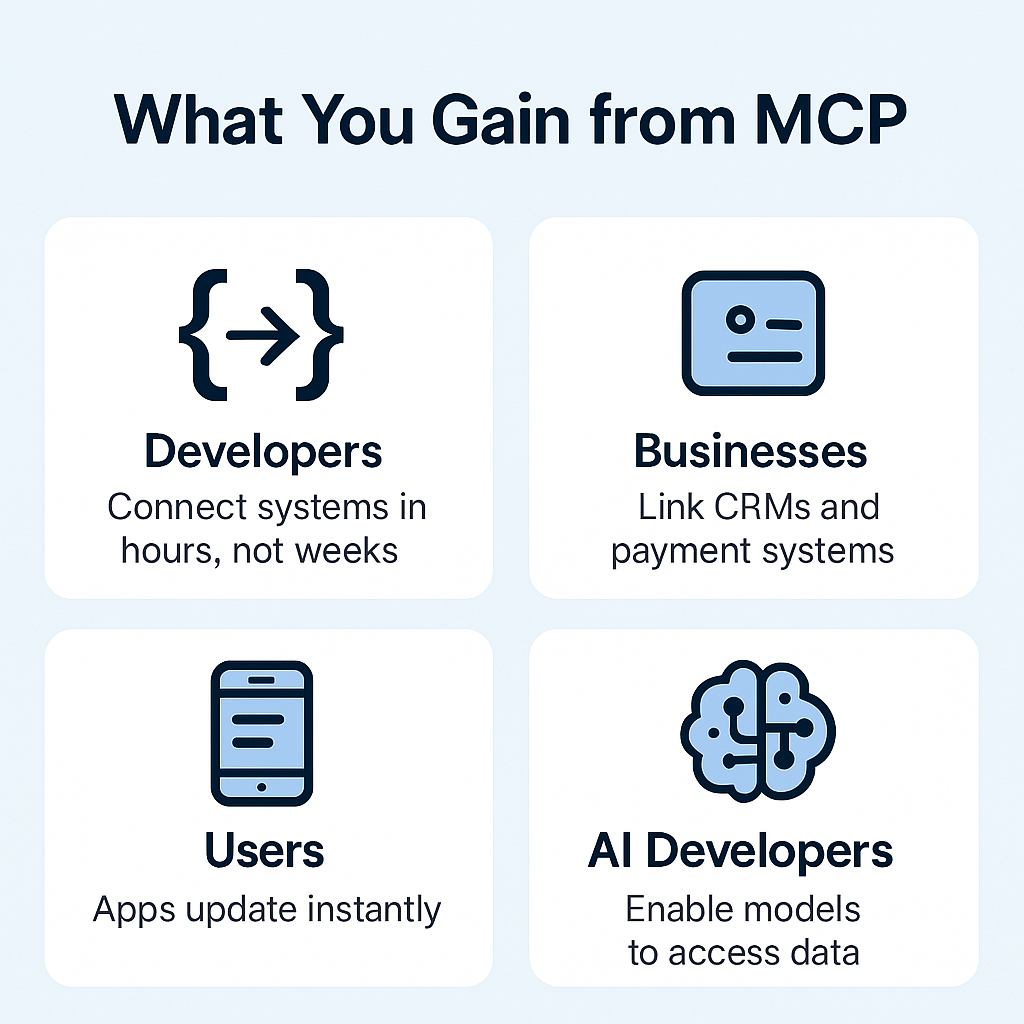
A UK startup, for example, used MCP to connect their booking app with a payment gateway, boosting conversions by 25%, according to a GitHub case study.
The Challenges
MCP isn’t without challenges. Setting it up can be tricky for beginners, especially when configuring servers and authentication. Security is a concern—misconfigured setups might expose data, though features like OAuth help mitigate risks. The ecosystem is still growing, so support for niche platforms (like IoT) is limited. These issues don’t overshadow MCP’s potential, but they require careful planning and community support to navigate.sparse. These aren’t dealbreakers, but they mean you’ll need to plan carefully and lean on community guides.
How to Start with MCP
Ready to try MCP? Here’s a step-by-step guide, drawing from methods in Substack, Hugging Face, and WeChat:
1.Gear Up:
- Editor: Visual Studio Code (download).
- Runtime: Install Node.js (nodejs.org) or Python (python.org).
- MCP Tools: Get mcp-client for JavaScript (npm install mcp-client) or mcp-python (pip install mcp-python) from npm or PyPI.
- Debugging: Postman (postman.com) for testing requests.
2.Pick a Project:
- Start small: link a note app to a task manager.
- Goal: Add a note, and MCP triggers a task creation.
3.Build the Server:

This listens for a createTask request and confirms the task.
4.Create the Client:

This sends a task title to the server and logs the result.
5.Secure It:
- Add authentication. Update the server:

- Set the client token:client.setToken(‘my-secret-123’);
6.Test Locally:
- Run the server (node server.js) and client (node client.js).
- In Postman, send a JSON-RPC request:

- Expect: {“jsonrpc”: “2.0”, “result”: {“status”: “success”, “task”: “Test task”}, “id”: 1}.
7.Try Real-World Cases:
- E-Commerce Sync: Per WeChat, a Shanghai startup used MCP to link a Shopify store with a logistics app. When a customer orders, MCP sends inventory updates instantly, cutting delays by 50%. Code snippet:javascript
client.request('updateInventory', { productId: '123', stock: 50 }); - Chat-Translation: Hugging Face’s demo connected a chat app to a translator. MCP sent messages for real-time translation:javascript
client.request('translate', { text: 'Hello', lang: 'es' }); // Returns 'Hola' - Analytics Dashboard: Substack’s case linked a website to Google Analytics via MCP, showing live visitor stats:

8.Scale Up:
- Add MCP’s context feature (per Substack) to share state, like user settings, without extra requests:javascript
client.setContext({ userId: 'abc123' }); - Test multiple apps, like syncing a CRM with email marketing.
9.Debug and Polish:
- Log errors: console.log(‘Request failed:’, error.message).
- Use HTTPS for live apps and validate inputs to avoid crashes.
- Check MCP’s specs for JSON-RPC details.
Real Case: A German freelancer (GitHub: @mcp-user123) built an MCP app linking a blog CMS to a newsletter tool. New posts triggered email drafts via:
javascript
client.request('createDraft', { title: post.title, content: post.body });
It saved 10 hours weekly, shared in MCP’s community repo.
Tips:
- Test locally first to catch bugs.
- Follow mcp.ai for configs.
- Ask for help on Reddit’s r/MCP or Hugging Face forums.
This takes 1-2 hours for a basic setup and scales to production with practice.
What’s Next for MCP
MCP’s future looks promising. With adoption ramping up among AI giants like OpenAI, Anthropic, and Google, the protocol is set to expand. Developers are working on mobile support, enabling iOS and Android apps to sync via MCP, and optimizing for low-latency IoT devices. A GitHub issue suggests WebAssembly integration for faster browser apps. As MCP grows, it could become a foundational standard—like HTTP was for the web—unlocking new ways to build and connect technology.
Why It’s Worth Your Time
MCP isn’t just a trend—it’s a practical solution to a persistent problem. For developers, it saves hours; for businesses, it cuts costs; and for users, it delivers seamless experiences. In the AI world, it’s even more critical, enabling models to access diverse data and collaborate effectively. With major players jumping on board, MCP is poised to shape the future of technology. Don’t gloss over it—now’s the time to get involved.
Explore More
Visit mcp.ai for detailed guides and specs. GitHub’s MCP repos offer projects like syncing fitness trackers with health apps. Hugging Face’s MCP blog shares a chatbot case study, while WeChat’s post details logistics wins. Addy Osmani’s Substack provides tutorials, and YouTube’s MCP Basics offers videos. Start building—it’s the best way to see why MCP matters.



